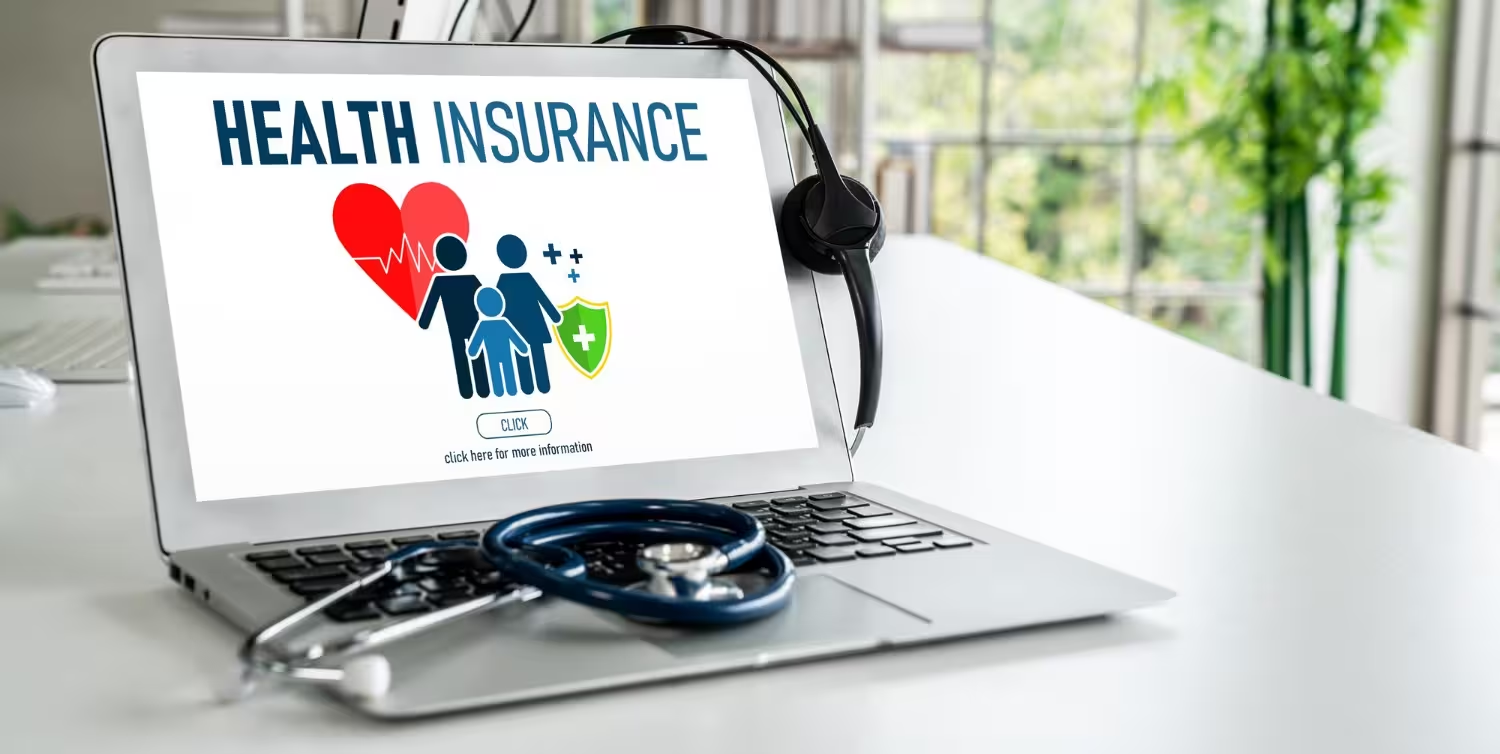Denial Code CO 29: An Ultimate Guide
In this blog, we will discuss what CO 29 is, some common causes, and how to address/prevent it.

In 2021, there were approximately 48 million denied claims. Claim denials continue to plague the healthcare system, bogging down medical billing personnel when it comes to their day-to-day tasks. Having to regularly handle these denials means time stripped from other duties such as collecting patient payments and processing existing claims.

So what is the secret to regulating your claim denial rate? Well, there are a few ways you can combat this medical billing nemesis. The first (and arguably most important) is knowing the most common claim denials in the game. Like anything, there are going to be some denial codes that will pop up more often than others. We have addressed a few of these denial codes in previous blogs such as CO 97, CO 151, and PR 204 just to name a few.
By educating your billing team on these recurrent denial codes, you are strengthening your administrative efficiency through prevention. So let’s continue the saga with denial code CO 29. Another code that’s often seen floating through the average medical biller’s day. In this blog, we will discuss what CO 29 is, some common causes, and how to address/prevent it.
What is Denial Code CO 29?
First and foremost, let me remind you of what a denial code is. A denial code is a standardized message that an insurance company provides, letting a provider know why they rejected or denied a claim. As I mentioned before, there are quite a few reasons for claims to face a denial. So many in fact that each reason gets their own code.
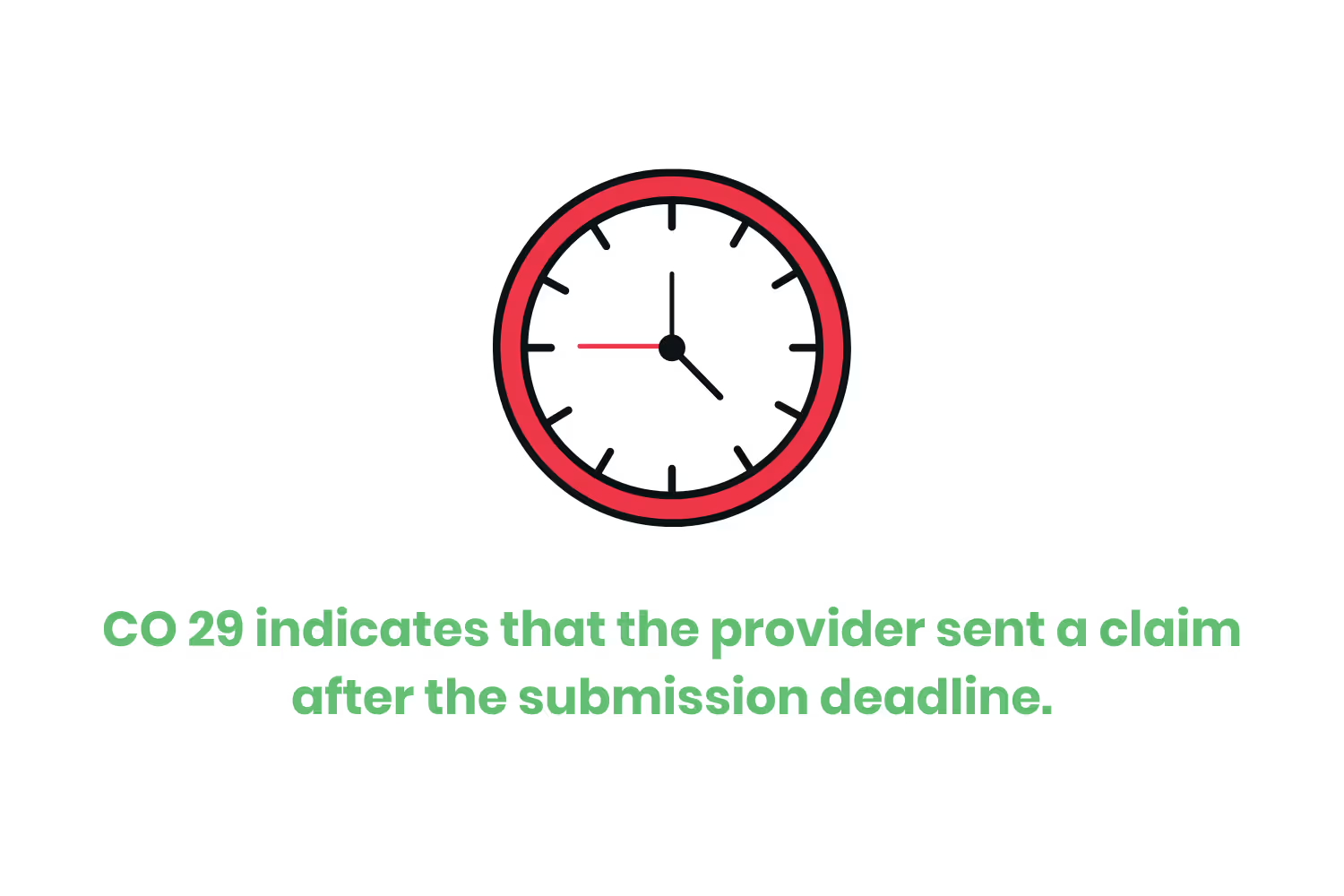
So what does CO 29 stand for? This code indicates that the provider sent a claim after the submission deadline. Any claims sent after the time frame set by the payer will receive this denial code. Time limits vary, depending on the particular insurance policy. Carriers calculate time frames from the date of the provided service. Some time limits might cap at 30 days while others go up to 2 years!
It’s one thing to understand what a denial code means, but it’s another to know what causes it. There are a few reasons you might come across CO 29, and being able to identify them prior to a claim submission is only going to save you time and money. So let’s get into it and take a look at the most common reasons.
Common Causes of Denial Code CO 29
Unfortunately, keeping your team informed on insurers’ time limits and having a generally efficient billing process can only get you so far when it comes to avoiding denials.
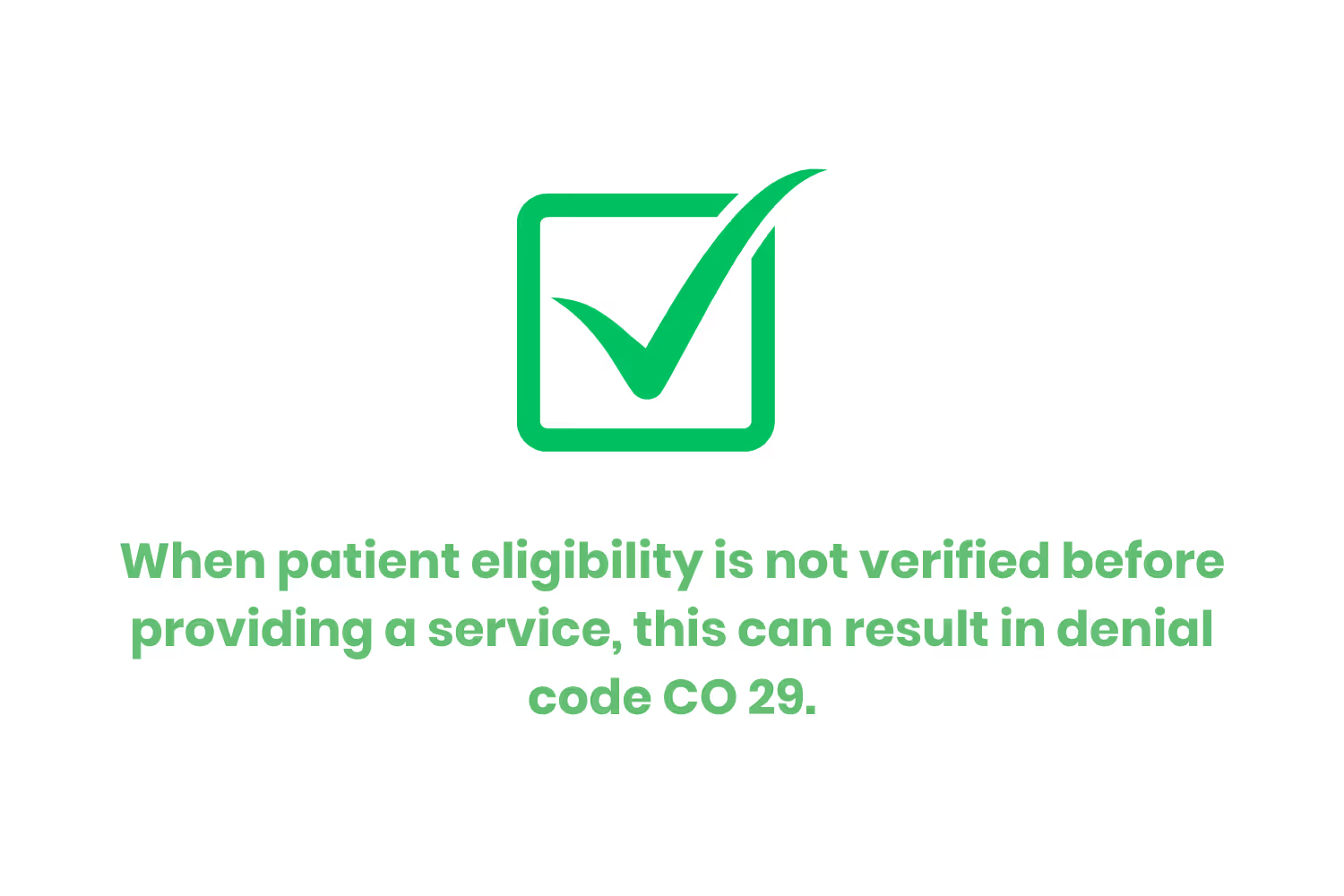
Apart from simply submitting your claim after the designated time frame, here are some common causes when it comes to denial code CO 29:
- A lack of updated fee schedules can warrant your practice receiving denial code CO 29. Fee schedules are a complete listing used by Medicare to refer to the fees paid to providers and suppliers. It’s an unfortunate truth that providers can sometimes forget to update their fee schedules, inadvertently leading to this kind of denial.
- When patient eligibility is not verified before providing a service, this can result in denial code CO 29. By not verifying eligibility and benefits first, providers will likely face delays in their claim filing process. The more delays in your claim filing, the more likely you will face late filings.
- Submitting more than one copy of the same claim, with identical services, can also trigger denial code CO 29. Duplicate claims can happen when you don‘t receive claim submission confirmations and use different billing data for the same service. Duplicates can also occur when billers do not check a claim’s status before resubmissions.
Addressing Denial Code CO 29
There are a few different ways you can deal with CO 29, all depending on the cause. For example, if you never submitted your claim in the timeframe allowed and don’t have a valid reason for it, it will be more difficult to appeal. If there is a legitimate reason, you are more likely to land an appeal based on that. Note that you need to file your claims as quickly as possible, this will be easier so long as you have a good system in place.
A legitimate reason might be that the patient thought they did not have health insurance at the time of the service, only to later find they did. If the claim is then filed after the deadline due to this change in information, but you have proof to report it, you might be able to appeal. Writing up a letter explaining what happened and why the patient didn’t think they had health insurance is the best place to start. Be sure to include what actually made them realize they did have the coverage, and you will have a 50% chance of landing a successful appeal.
When you first receive denial code CO 29, make sure you start by reviewing the submission date of the claim. By calculating the time between the service date and the submission date, you can ensure any compliance with the payer’s filing limit. With proof of timely filing, you can submit this information as evidence to appeal the denial.

An example of this might be an explanation of benefits (EOB) from secondary insurance. These benefits might indicate that the primary payer denied the claim initially. In this case, this would be proof of timely filing to appeal a denial from the secondary insurer. Be sure to include any relevant documentation such as this, as well as a copy of the claim.
Finally, be sure to promptly engage with the insurance claim department that sent the denial. You can better understand the reasoning for any claim denial this way, even denials outside of CO 29. Always ask about the following points to collect insight on CO 29 claim denials:
- Claim received to date.
- Denial date.
- The stipulated time frame for submission.
Submitting Proof of Timely Filing
When it comes to timely filing denials, they’re most often upheld because of incomplete documentation accompanying reconsideration requests. Whenever your team submits a request for reconsideration of a claim, they should be sure to also submit an electronic data interchange (EDI) acceptance report.
This is because submission reports are rarely considered proof of timely filing by themselves.
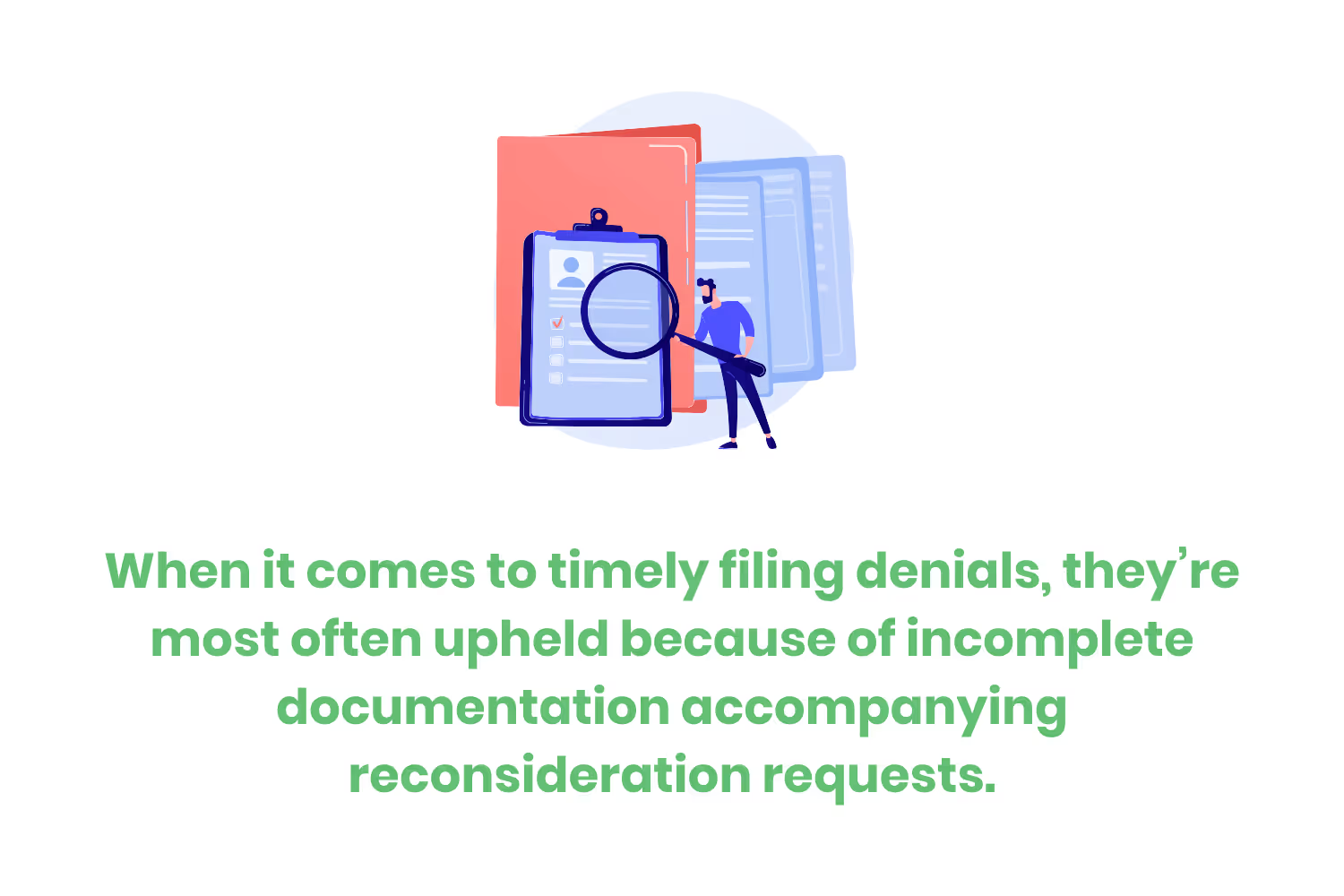
Proof of timely filing for electronic claims through acceptance reports must include:
- The wording which indicates the status of a claim. Either accepted, received, or acknowledged.
- Show when the status of the claim became available if it was during the timely filing period.
Of course, prevention is the best medicine. This applies to medical billing just as well as the actual medical practice. Let’s take a look together at some solid prevention methods.
Preventing Denial Code CO 29
So what can you do to help you and your team from making the same mistakes over and over again?
To avoid repeat CO 29 denial codes, you can start by familiarizing yourself with the filing time frames of the payers you work with. Also, be sure to utilize clearinghouses to inspect your claims before submitting them to payers. This way you can pinpoint errors in your claims and avoid missing timely filing dates.
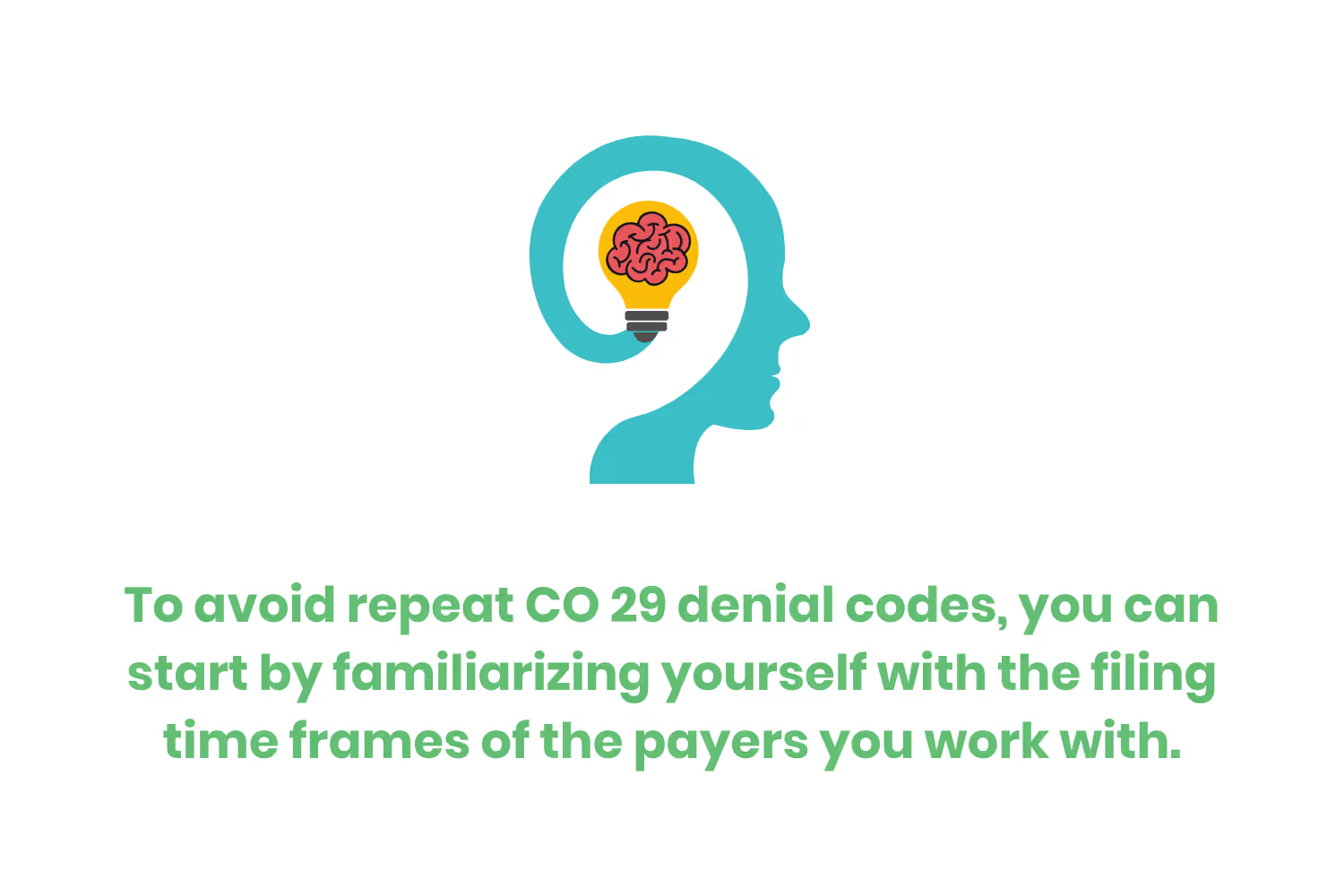
Prompt documentation is another important tip to keep in mind while navigating any situation in medical billing. With claim denials such as CO 29, this allows you to readily have information at hand to help support any appeal you might need to submit. The last thing you want to do is be scrambling to find proper documentation while handling denials and rejections.
And always keep a keen eye on claim statuses. Clearinghouses help you to check the status of your submitted claims, proving once again to be an important tool to have in your billing and coding toolbelt.
Conclusion
Make sure you pay attention to the terms and conditions of the insurance companies you work with. Most payer’s contracts include a clause stating that they are not responsible for claims received outside of the timely filing limit. This is why we suggest investing in a clearinghouse, for an extra layer of protection and a sense of security.
Doing so will not only strengthen your revenue cycle management system, but encourage a seamless administrative process for your organization.
Emphasize your product's unique features or benefits to differentiate it from competitors
In nec dictum adipiscing pharetra enim etiam scelerisque dolor purus ipsum egestas cursus vulputate arcu egestas ut eu sed mollis consectetur mattis pharetra curabitur et maecenas in mattis fames consectetur ipsum quis risus mauris aliquam ornare nisl purus at ipsum nulla accumsan consectetur vestibulum suspendisse aliquam condimentum scelerisque lacinia pellentesque vestibulum condimentum turpis ligula pharetra dictum sapien facilisis sapien at sagittis et cursus congue.
- Pharetra curabitur et maecenas in mattis fames consectetur ipsum quis risus.
- Justo urna nisi auctor consequat consectetur dolor lectus blandit.
- Eget egestas volutpat lacinia vestibulum vitae mattis hendrerit.
- Ornare elit odio tellus orci bibendum dictum id sem congue enim amet diam.
Incorporate statistics or specific numbers to highlight the effectiveness or popularity of your offering
Convallis pellentesque ullamcorper sapien sed tristique fermentum proin amet quam tincidunt feugiat vitae neque quisque odio ut pellentesque ac mauris eget lectus. Pretium arcu turpis lacus sapien sit at eu sapien duis magna nunc nibh nam non ut nibh ultrices ultrices elementum egestas enim nisl sed cursus pellentesque sit dignissim enim euismod sit et convallis sed pelis viverra quam at nisl sit pharetra enim nisl nec vestibulum posuere in volutpat sed blandit neque risus.

Use time-sensitive language to encourage immediate action, such as "Limited Time Offer
Feugiat vitae neque quisque odio ut pellentesque ac mauris eget lectus. Pretium arcu turpis lacus sapien sit at eu sapien duis magna nunc nibh nam non ut nibh ultrices ultrices elementum egestas enim nisl sed cursus pellentesque sit dignissim enim euismod sit et convallis sed pelis viverra quam at nisl sit pharetra enim nisl nec vestibulum posuere in volutpat sed blandit neque risus.
- Pharetra curabitur et maecenas in mattis fames consectetur ipsum quis risus.
- Justo urna nisi auctor consequat consectetur dolor lectus blandit.
- Eget egestas volutpat lacinia vestibulum vitae mattis hendrerit.
- Ornare elit odio tellus orci bibendum dictum id sem congue enim amet diam.
Address customer pain points directly by showing how your product solves their problems
Feugiat vitae neque quisque odio ut pellentesque ac mauris eget lectus. Pretium arcu turpis lacus sapien sit at eu sapien duis magna nunc nibh nam non ut nibh ultrices ultrices elementum egestas enim nisl sed cursus pellentesque sit dignissim enim euismod sit et convallis sed pelis viverra quam at nisl sit pharetra enim nisl nec vestibulum posuere in volutpat sed blandit neque risus.
Vel etiam vel amet aenean eget in habitasse nunc duis tellus sem turpis risus aliquam ac volutpat tellus eu faucibus ullamcorper.
Tailor titles to your ideal customer segment using phrases like "Designed for Busy Professionals
Sed pretium id nibh id sit felis vitae volutpat volutpat adipiscing at sodales neque lectus mi phasellus commodo at elit suspendisse ornare faucibus lectus purus viverra in nec aliquet commodo et sed sed nisi tempor mi pellentesque arcu viverra pretium duis enim vulputate dignissim etiam ultrices vitae neque urna proin nibh diam turpis augue lacus.


